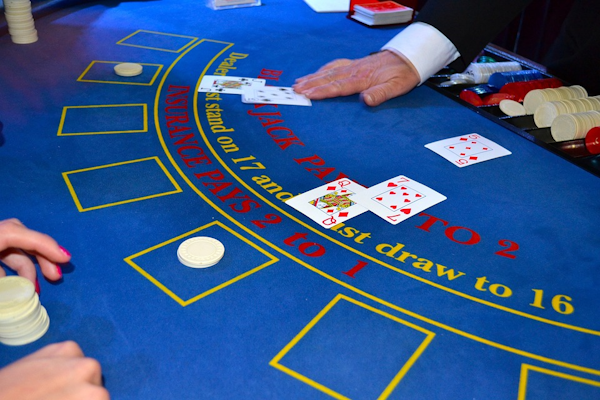If you’ve ever played blackjack at a land-based casino or even observed other players, you may have heard them talk about “hot” or “cold” tables. The idea behind this myth is that certain tables are luckier or more likely to produce winning hands than others.
However, the concept of hot and cold blackjack tables is nothing more than a myth and misunderstanding. In this article, we’ll debunk this popular belief and shed some light on the true nature of blackjack tables. Let’s dive in!

The Myth of Hot and Cold Tables
The concept of hot and cold blackjack tables is based on the belief that some tables are in a “hot streak” and will produce winning hands, while others are in a “cold streak” and should be avoided. Players may often attribute their wins or losses to the table they are sitting at rather than their own gameplay or luck.
In reality, blackjack is a game of chance with a mathematical advantage for the casino, known as the house edge. Each hand in blackjack is independent of the previous one, meaning that past results have no bearing on future outcomes. The cards are shuffled before each hand, ensuring that the deck’s composition is constantly changing and eliminating any pattern or streak.
The Role of Randomness
In blackjack, as in all casino games, randomness plays a significant role. The cards are dealt from a deck or shoe, and the outcome of each hand is determined by the combination of cards in play. This randomness is controlled by a random number generator (RNG) in online blackjack and by professional shuffling techniques in land-based casinos.
The belief in hot and cold tables is a cognitive bias known as the “gambler’s fallacy,” where players believe that past events influence future outcomes in a random process. It’s essential to remember that each hand is an independent event, and the outcome is purely random.
This is just a brief description of RNG, and in reality, we are only just scratching the surface. For a more in-depth look at the randomness of blackjack tables, check out the 32Red casino blog as a good starting point.
The Impact on Gameplay
Believing in hot and cold tables can have a detrimental effect on your gameplay. If you believe you’re sitting at a “cold” table, you may become anxious or frustrated, affecting your decision-making and potentially leading to poor choices. Conversely, if you think you’re at a “hot” table, you might become overconfident and throw away money management altogether, which can also lead to losses.
In reality, the outcome of each hand in blackjack is determined by the strategy you employ, the cards you’re dealt, and a bit of luck. The best approach is to focus on playing sound blackjack strategy, managing your bankroll responsibly, and enjoying the game for the entertainment it provides.
The House Edge in Blackjack
While the myth of hot and cold tables is unfounded, it’s essential to understand that the casino does have an edge in blackjack. This edge is typically around 0.5% to 1%, depending on the specific rules and variations of the game.
The house edge means that, over the long run, the casino will profit from players’ bets. However, in the short term, anything can happen, and players can experience both winning and losing streaks.
ENDING THOUGHTS
In conclusion, the myth of hot and cold blackjack tables is just that – a myth. Blackjack is a game of chance, and each hand is independent of the previous one. The outcome is determined by the random shuffling of cards and the decisions you make as a player.
Rather than focusing on finding hot or cold tables, concentrate on learning and implementing solid blackjack strategy, managing your bankroll wisely, and enjoying the excitement of the game. Remember, the true enjoyment of blackjack lies in the thrill of the cards and the camaraderie at the table, not in chasing elusive streaks or patterns that don’t exist. Have fun





